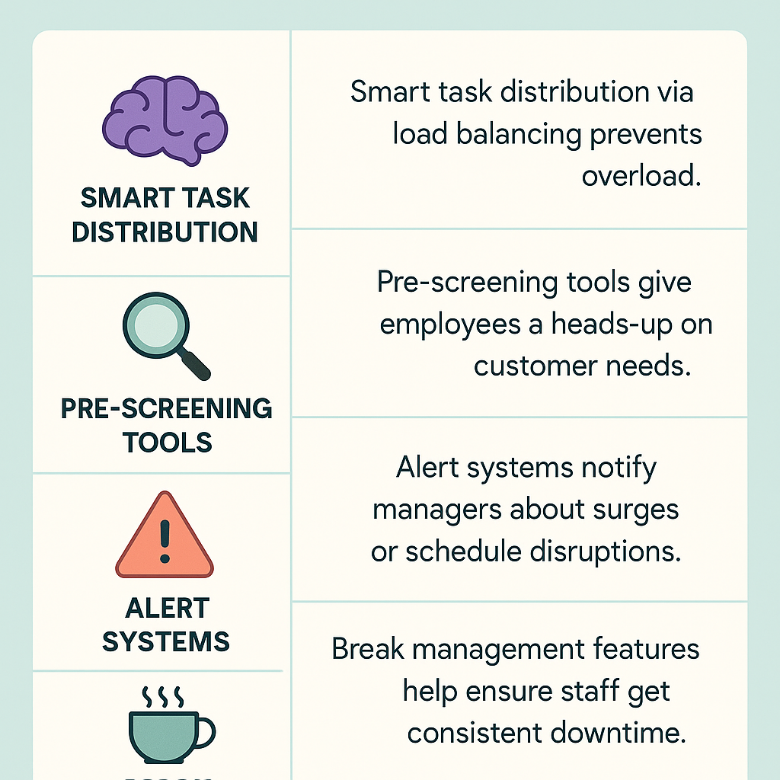
The Role of Queue Management in Reducing Staff Burnout
 (Source: Freepik)
(Source: Freepik)
In industries where face-to-face interaction is the norm: healthcare, banking, public services, and telecom, staff are reaching breaking points. Employees in these sectors are often asked to manage overwhelming customer volumes without the tools to do so effectively. They become exhausted, which means the quality of service will decline.
Queue tools prove their worth here. Tools like Q-nomy’s enterprise appointment scheduling system can help bring order to your chaotic work environment. By smoothing out customer flow and providing structure to interactions, these systems do more than reduce wait times; they also reduce stress. That translates directly into stronger, more supported teams. Organizations aren’t just enhancing customer experience; they’re also prioritizing the people behind the counter or call desk.
Burnout is a performance risk, but companies can get ahead of employee fatigue by improving engagement and outperform their peers in productivity and retention. Technology, especially queue management systems, is becoming central to reducing burnout with technology.
The Need for Real-Time Resource Allocation
In today’s fast-paced service environments, relying on static schedules or yesterday’s data isn’t enough. Businesses need to respond as things happen, whether it’s a sudden spike in customer visits or an unexpected staff shortage. Real-time resource allocation allows managers to shift staff, adjust priorities, and optimize service flow right away. This also takes pressure off staff by keeping workloads balanced and predictable.
Burnout typically occurs when people are working under constant pressure without being able to take a break. This is especially typical in service settings where demand is erratic every day.
How Queue Tools Enable Real-Time Optimization
Resource optimization tools can do more than manage appointments; they can protect your workforce from fatigue. Systems like Q-nomy can help with staff burnout prevention in the following ways. Streamlining Customer Flow
By routing customers through different channels, such as web, app, kiosk, or in-person staff, they are spared from crowd surges. With better flow comes calmer service, reducing burnout with technology.
Reducing Manual Workload
Many of the little, repetitive activities that erode employee focus are eliminated by features like digital rescheduling, automated updates, and self-check-in, giving you more time to interact with your clients.
Improving Work Predictability
Live dashboards and demand forecasting tools help managers plan shifts more effectively. Staff can come into work knowing what to expect, and that makes a real difference in reducing mental strain. Enhancing Staff-Customer Interactions
When customers are informed and guided through a transparent system, they tend to be more patient. That reduces conflict, makes interactions smoother, and limits the emotional toll on staff.
Benefits of Real-Time Resource Allocation
 (Image: Pexels)
Not all queue management systems are created equal. The best systems come equipped with features that actively protect staff well-being. For example:
(Image: Pexels)
Not all queue management systems are created equal. The best systems come equipped with features that actively protect staff well-being. For example:
-
Smart task distribution via load balancing prevents overload.
-
Pre-screening tools give employees a heads-up on customer needs.
-
Alert systems notify managers about surges or schedule disruptions.
-
Break management features help ensure staff get consistent downtime. Both efficiency and robustness are the goals of each of these qualities. To put it another way, these tools are useful for team support as well as customer management.
 (Source: Qnomy)
(Source: Qnomy)
Choosing the Right Queue Tool For Your Business
Picking the best queue tool for your business is about finding a solution that fits how your team works and what your customers expect. Some systems handle basic line management, but others, like Q-Flow, go further by linking up with scheduling platforms, offering live performance insights, and working smoothly across web, mobile, and in-person channels.
When comparing solutions, think about how well they can support your company's expansion, integrate with your current software, and assist you in making more informed choices regarding personnel and service flow. Everyone's daily operations will go more smoothly and effectively if the correct decision is made.
In Conclusion
Organizations often treat staff burnout prevention as something for HR to handle. Preventing burnout requires structural change in the organization. Environments designed for urgency and unpredictability are not conducive to the success of frontline teams. They require mechanisms that safeguard their time, concentration, and health.
That’s where resource optimization tools fit in. With tools like the enterprise appointment scheduling system from Q-nomy, companies can rebuild the foundation of day-to-day service. And when your operations run with less stress and more stability, everything else improves, such as customer satisfaction, retention, and even profitability.
Reducing burnout with technology is no longer a bonus. It’s essential. Organizations that use queue management systems wisely aren’t just building better workflows, but also healthier, longer-lasting teams.
We’d love to hear your story. Has your organization seen improvements after implementing a queue platform? Share how you’re using technology for staff burnout prevention. We’re listening.